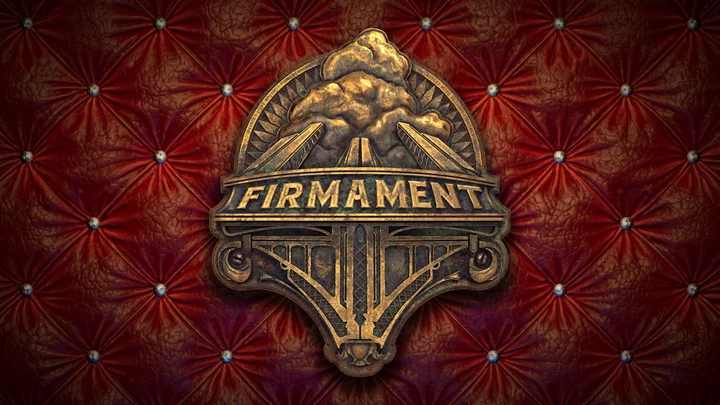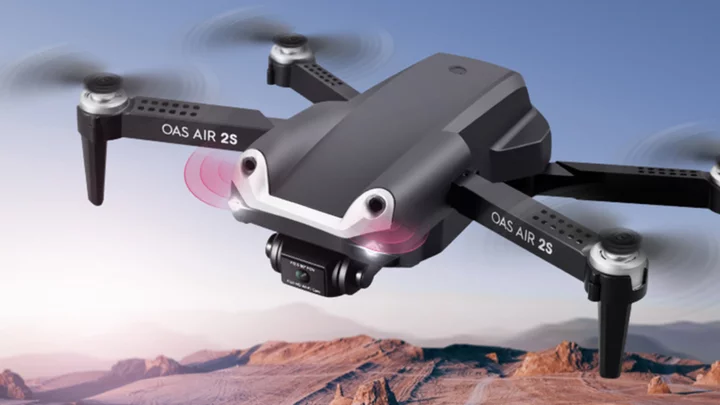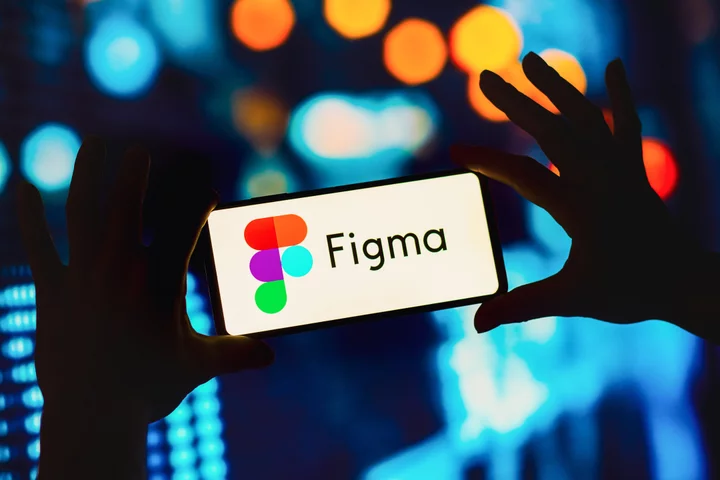May 2023 will be remembered for one thing in video game history: the launch of the five-star, Editors' Choice-winning, and wildly imaginative The Legend of Zelda: Tears of the Kingdom. But if you have a few other memory slots available, Firmament—the latest puzzle-adventure game from the creators of Myst and Obduction—deserves some consideration. This stylish PC game tasks you with traversing three worlds using steampunk contraptions, while discovering why you're there and what happened to the previous denizens. Although not as meaty as Myst and its ilk, and definitely targeted at VR players, the $34.99 Firmament is an engaging enigma that teases your brain without overstaying its welcome.
Awake and Confused
Developer Cyan loves to start its games with the player simply dropped into the story with little explanation, and Firmament is no different. You begin in what appears to be a bunker filled with old-timey mad scientist paraphernalia. Then, a hologram of a woman appears and informs you that she is dead, and that you must carry on her mission as a Keeper.
Your mission involves roaming between three worlds—the frozen Curievale, the seaside Juleston, and the horticultural St. Andrew—and activating immense machinery that serves an unclear purpose. To do this, you're equipped with the mechanical gauntlet called the Adjunct.
The Adjunct is the primary way you interact with objects in Firmament's worlds. To open a door, you first need to locate its socket—a mechanical interface marked with blue and yellow targets. Aim the Adjunct at the socket, fire it, and the Adjunct rockets off to make the connection, leaving a glowing tether in its wake. Once attached, the Adjunct displays a small menu that lets you close or open the door by twisting the Adjunct left or right.
Different sockets may have multiple options. For example, the game's many elevators can only go up and down, but cranes feature additional controls for moving forward and backward, too. The menu displays additional feedback, such as diagrams that give you a clue about a socket's function. This is a welcome change from other Cyan puzzle games where you extensively search extensively for effects.
The sockets also add a deeper level of play as you upgrade the Adjunct to fire farther and chain connections between sockets. By linking with one socket, your Adjunct can reach other sockets outside your line of sight. It's a clever trick, but the Firmament has surprisingly little use for it.
The Adjunct is clearly a function of Firmament's VR-first design. However, even in 2D (as I played the game), it adds a surprising rhythm to every interaction. Aim, shoot, twist to raise the elevator. Aim, shoot, twist to lower the bridge. Aim, shoot, twist to raise the bridge again, because you need to be over there to solve the puzzle. In Myst and other similar titles, you're sometimes parked in front of a puzzle, trying to discern its function. With the Adjunct, you already have all the tools necessary to solve the problem, you just need to figure out how to do it.
Want more news, reviews, gear, and tricks to level up your game? Sign up for our gaming email newsletter.
The Adjunct also makes Firmament a far more dynamic puzzle-solving experience. You're always moving, either twisting a socket or lining up a shot. This extends to the puzzles, too; in true Cyan fashion, the environment itself is a puzzle. In St. Andrew's lush greenhouse, you must navigate an open atrium by crossing a series of catwalks attached to hanging planters that can be raised, lowered, and rotated with the Adjunct. Other puzzle games might ask you to solve an abstract door lock, but Firmament keeps you moving by putting you inside the puzzles.
Although I enjoyed my experience playing Firmament on the Steam Deck, it was clear that the Adjunct and puzzles make more sense in VR. I suspect that the game's straightforward progression and lack of Cyan's trademark text infodumps are also in response to VR's limitations. It's one thing to get frustrated and stare at your screen when you get stuck in Obduction, it's another to be frustrated and stuck with a hot VR system strapped to your face.
Most of the puzzles in Firmament can be solved without working out the underlying logic, which is fine for people like me who like to tinker with things. You probably won't need a notebook to keep track of clues, and you definitely won't need a number system as you would in Riven.
That doesn't mean Firmament's puzzles are easy. I managed to get completely stuck several times in my play-through. In fact, I would have liked to see the inclusion of an integrated hint system, like in the Switch port of Myst or the excellent VR puzzle game The Room: A Dark Matter. But it sets Firmament apart from the experience that Cyan fans expect.
The Worlds of Firmament
When not solving puzzles, Firmament invites us to take in the scenery. It's a brass-and-mahogany steampunk dream, where an enameled orb that hums like a broken lawnmower on a piano teleports you from place to place and a whimsical Omniwheel contraption links major locations. The Swan—a transit hub that doubles as a lounge—is another in Cyan's history of immediately iconic locations: a domed brass space pitted with twinkling lenses and centered around an enigmatic sphere traversed by rotating arms.
In one particularly memorable moment, I activated an immense quadruped robot called the Camelus, and used it to navigate across a valley while completing small puzzles. I howled with delight at the sheer absurdity of it.
Like Riven, Firmament has an extremely strong design language that informs every facet of the world. And like Riven, it's a strength and a weakness; it starts to look rather samey, after a while. Once you've seen one giant, sky-piercing white arch, you've seen them all (in this case, three). These set pieces stitch the worlds together as familiar milestones. Once you find the reservoir in the sulfuric Juleston, you'll know to keep an eye out for it in the lush and overgrown St. Andrew.
Although you can tackle Firmament's worlds in any order, there's a limited path for you to take. Each world has two halves of play, with progression blocked in the middle by the Adjunct upgrades found in the other worlds. Outside the paths your traverse from puzzle to puzzle, there's disappointingly little to do or see. That linearity keeps the game approachable and easy to navigate—and there's an in-game reason for it—but it also makes Firmament feel less lush and lived-in.
A Puzzling Tale
Many similar titles boil down to a final question: Given everything you have seen and learned in your adventure, whom do you trust? Choosing wrong in those games usually has a "bad ending" consequence, and sometimes that involves being clubbed to death by an FMV of Brad Dourif.
Firmament shifts this from a gameplay mechanic to a narrative one, where you're left to grapple with what you've learned by the game's end. Although I enjoyed trying to unlock all the good and bad endings Cyan included in other games, they aren't missed here and it shows a certain confidence to actually allow you to develop their own opinion, rather than spoon-feeding a moral lesson.
Firmament has a complete story, but there isn't much else to learn about the world. Besides the occasional narrations provided by the ghostly mentor, and a smattering of reading materials mostly clustered to the end of the game, there's surprisingly little environmental storytelling in Firmament. That's in stark contrast to Myst, where the contents of a wardrobe might give clues about the owner's character. Likewise, Obduction is packed with audio logs, books, a slideshow presentation, and diary entries. Even the hodgepodge construction of Obduction's central town Hunrath hints at what has happened and who lived here.
Although Firmament's worlds are littered with boxes, bottles, papers, and other digital detritus, they are mostly blank and unclickable. We do get some clues; obtuse motivational phrases like "we eat" are broadcast from loudspeakers, and dramatic propaganda-looking tapestries are draped around the various buildings. The busted-up utopia vibes are certainly disconcerting, but their true meaning isn't revealed until the end. Which, in case you were worried, is ultimately hopeful and delightfully strange.
Why You Should Game on a PCCan Your PC (or Mac) Run Firmament?
Firmament is currently available for macOS 13.3 or later and Windows 10/11 machines on GOG, the Mac App Store, and Steam. Cyan has promised a PS4/5 release, along with PlayStation VR2 support, but has not given a date for that release.
Cyan recommends at minimum an Apple M1 or Intel i5 processor, either AMD or Apple graphics, 8GB RAM, and 20GB of storage for Mac players. The minimum recommendations for Windows are an AMD Ryzen 7 2700X or Intel i5 7000 CPU, an AMD Radeon RX 5700XT or Nvidia GeForce GTX 1070 graphics card, DirectX 11 support, and 16GB of RAM.
Launched as both a 2D and VR title, Firmament currently supports VR through Steam VR and the Editors' Choice pick Index, Rift/Rift, and HTC Vive/Vive Pro VR headsets. The Editors' Choice winner Quest 2 is supported through a Link cable.
The game is also Steam Deck verified, and I played through Firmament on my Deck in about 15 hours without any compatibility issues.
The Tyranny of 3D
Although Firmament played smoothly on my Steam Deck, I did encounter a few bugs during my early run through the game. At one point, the game slowed to a crawl and I eventually had to reset it. Later, I somehow fell through a floor and found myself wandering directly through the landscape—far outside where I should have been.
Cyan has since released three patches after the game's initial launch and I haven't been able to recreate these bugs since. There's also an option in the Settings menu to warp to a safe location, handy in case you find yourself wedged in an impossible spot.
Bugs are always frustrating, but I also encountered issues that seemed more fundamental. Once, I somehow positioned the Camelus in a spot where it was impossible to board it again. Earlier, I plopped the immense double-cabbed Curievale ice crane on top of a bridge. This let me continue playing, but meant that it was impossible to get back into the crane to move it. If I had done the puzzles in a different order, I think it would have stopped my progress altogether. Even after the most recent patch, I've still run into major issues with that crane.
To my untrained eye, these seem like the consequence of trying to build Firmaments puzzles into a fully 3D environment. Sometimes, things don't line up quite right. Although these issues were rare for me, I could easily imagine someone having to backtrack in order to get around a similar problem. I was grateful I got in the habit of saving often. What's difficult is that you only get two saved game slots and one auto-save slot.
An Age of Its Own
Throughout my time with Firmament, I've spent as much thought puzzling out how it fits within Cyan's philosophy and history as I have trying to wrangle the Curievale ice cart. That's a little unfair, considering that Firmament's sibling games from Cyan include a landmark piece of video game history (Myst, as mentioned in Video Game of the Year) and a genre-defining masterpiece (Riven).
After playing through Firmament, I see it as a different game from what came before it. The game has a new approach to puzzles due to the VR hook that makes motion and clarity paramount. It's a smart melding of Cyan's trademark design, a new experience enabled by new technology, and stylish visuals.
If anything, the game is a bit too slick and could use some more weirdness. Even today, Myst almost feels like outsider art, and Obduction is bursting with ideas to the point that it almost becomes a problem. Firmament is far more focused, both in its story and its design. As I wandered across Firmament's worlds, I longed for distraction—not because the puzzles aren't engaging, but because I wanted to do more than just solve puzzles. I wanted to stumble across hints and clues about why these worlds are how they are, and who lived here before. Visual signposting that seamlessly guides you is a hallmark of good design, but a roundabout journey can be enriched by what you find along the way.
The ambition in Firmament is heartening, and a pleasant challenge to anyone that enjoys a good puzzling adventure game. And for anyone disappointed that it's not the same experience as Myst, that game is already out on VR and a re-release of Riven is just around the corner.
For more PC game reviews and previews, check out PCMag's Steam Curator page. For in-depth video game talk, visit PCMag's Pop-Off YouTube channel. Eager to see the new titles on the horizon? Check out The Best Video Games Coming Out in 2023.









